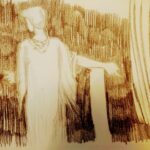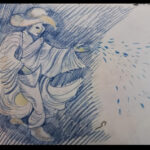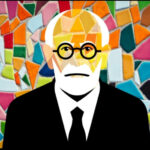Ernst Cassirer’s theory of symbolic forms profoundly expands our understanding of the various ways through which humans interpret and conceptualize reality. When considering the realm of dreaming within this theoretical framework, we can appreciate how dreams might be analyzed as a distinct symbolic form, parallel to language, myth, art, and science. Dreams could be viewed as symbolic narratives that reflect individual and collective unconscious processes.
Dreaming as a Symbolic Form
1. Symbolic Representation in Dreams:
- Dreams are rich with symbols and often use complex symbolic language to convey messages. These symbols might not be straightforward but instead operate through associations and emotional resonances, much like the symbols in myth or art. Cassirer’s approach would suggest looking at how these symbols help the dreamer structure and interpret their internal experiences.
2. Mediation Between Conscious and Unconscious:
- According to Cassirer, symbolic forms mediate between the self and the world, shaping experience through cultural and psychological lenses. Dreams function similarly but on an internal scale: they mediate between the conscious mind and the unconscious mind, helping to translate unconscious content into a form that can be consciously recognized and considered.
3. Dreams and Myth:
- There is a close relationship between the symbolism found in dreams and myths. Both rely on a form of thinking that is fundamentally different from the logical structures valued in science and technology. Myths and dreams weave complex narratives that are not linear or causally transparent but are rich in metaphor and emotional depth. This similarity might suggest that dreams and myths share a common symbolic structure, something that Cassirer’s theory could help to elucidate.
4. The Phenomenology of Dreaming:
- Applying Cassirer’s phenomenological approach to dreams would involve exploring how dreams create a “world” out of sensory, emotional, and symbolic elements. This world is coherent within itself and follows its own logic, much like the “worlds” created by language, art, or religious symbols according to Cassirer’s theory.
Philosophical Implications of Dreams as Symbolic Forms
1. Dreams and Individuality:
- Dreams might reveal how symbolic forms are not only socially and culturally determined but also personally customized. Each individual might develop personal symbols within their dreams that are unique and which function to integrate their experiences and unconscious desires.
2. The Constructive Role of Dreams:
- Just as language shapes reality for Cassirer, dreams could be seen as shaping the inner reality of the dreamer. They construct a narrative that might help the individual deal with psychological conflicts, desires, or fears, suggesting a therapeutic or integrative function of this symbolic form.
3. Comparative Analysis with Other Forms:
- Understanding dreams in the context of Cassirer’s symbolic forms might also involve comparative analysis with other forms like myth and art to see how different cultures and individuals use these forms to deal with similar existential and psychological issues.
Conclusion
Viewing dreams through the lens of Ernst Cassirer’s theory of symbolic forms opens up a rich field of analysis that bridges phenomenology, psychology, and cultural studies. It emphasizes the role of symbolic understanding in crafting the narrative structure of dreams, thereby providing insights into the deeper psychological functions of dreaming. This approach could potentially lead to a fuller understanding of how humans use various symbolic systems not only to communicate with others but to understand themselves.







